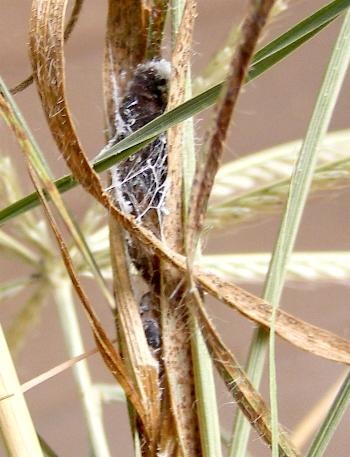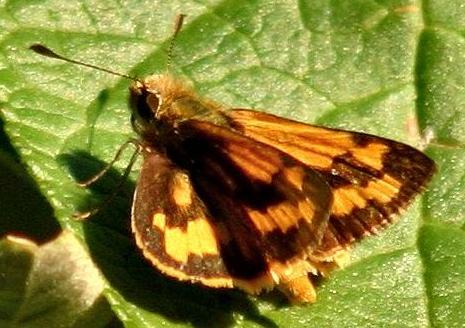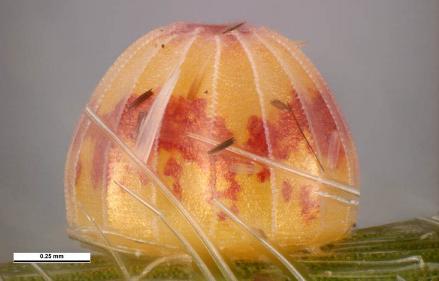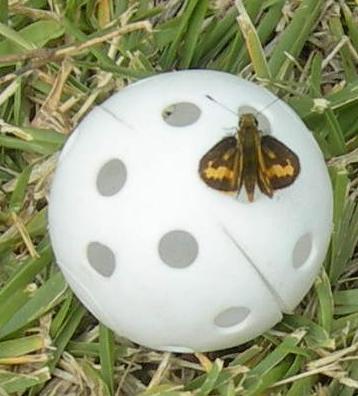
| Greenish Grass-dart HESPERIINAE, HESPERIIDAE, HESPERIOIDEA | (donherbisonevans@yahoo.com) and Stella Crossley |

(Photo: courtesy of Merlin Crossley, Melbourne, Victoria)

| Greenish Grass-dart HESPERIINAE, HESPERIIDAE, HESPERIOIDEA | (donherbisonevans@yahoo.com) and Stella Crossley |

(Photo: courtesy of Merlin Crossley, Melbourne, Victoria)
This species was named after the distinguished English insect collector James J. Walker
The Caterpillar has a dark brown head marked with a white wavy band on each side. The body is green. It feeds at night on common grasses (POACEAE), including :
and also :

It usually rests by day in a shelter formed from rolled blades of its foodplant, and grows to a length of about 2 cms. To us, the caterpillar was indistinguishable from that of the related species Ocybadistes flavovittatus. Most of these caterpillars we found in Melbourne were Ocybadistes walkeri, and most of them found in Sydney were Ocybadistes flavovittatus.

The adults have dark brown wings with orange markings above. The undersurfaces of the wings have similar markings, but on a greenish yellow background, except for a dark patch along the hind margin of each forewing.

The wingspan is about 2 cms. The dark grey patch on each forewing of the males, and the more convex margin of the female forewing, are the best means of distinguishing the sexes.

The species is easily confused with Ocybadistes flavovittata. The greenish ground colour beneath the wings of the Ocybadistes walkeri distinguishes them.

The eggs of this species are initially white, but turn yellow with red markings as hatching approaches. The eggs are dome-shaped with 16 ribs, and have a diameter of about 1mm. They are laid singly, and attached to the upper surface of a blade of grass by the female butterfly.

The species occurs in Australia as the subspecies

Further reading :
Michael F. Braby,
Butterflies of Australia,
CSIRO Publishing, Melbourne 2000, vol. 1, pp. 204-205.
Francis Arthur Heron,
A vist to Damma Island, with notes on the fauna,
in James J. Walker :
The Annals and Magazine of Natural History,
Series 6, Volume 14, Number 79 (1894), p. 106.
Wesley Jenkinson,
Life History Notes on the Narrow-brand Grass-dart,
Ocybadistes flavovittata flavovittata (Latreille, [1824])
and the Greenish Grass-dart, Ocybadistes walkeri sothis
(Waterhouse 1933) Lepidoptera: Hesperiidae),
Butterflies and Other Invertebrates Club,
Metamorphosis Australia,
Issue 54 (September 2009), pp. 16-20.
 caterpillar |  butterflies |  Lepidoptera |  moths |  caterpillar |
(updated 3 April 2012, 3 April 2025)